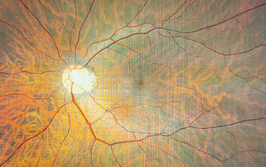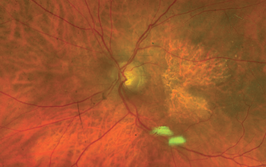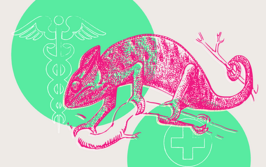
‘Un-eclipsing’ Solar Harm
AO-SLO imaging reveals the retinal damage caused by staring at the sun
August 21, 2017, marked the first total solar eclipse since February 26, 1979, to be visible anywhere in the US. But despite a comprehensive campaign advising people to take precautions to protect their eyes when viewing the eclipse, inevitably, some didn’t.
One such casualty presented to the New York Eye and Ear Infirmary of Mount Sinai three days after directly viewing the eclipse. The patient had viewed the solar rim for around six seconds on several occasions without using eclipse glasses. Realizing that the patient was exhibiting classic signs of solar retinopathy, the team involved in her care decided to find out more about the pathology of this rare condition, publishing what they found in JAMA Ophthalmology (1).
Avnish Deobhakta, the paper’s corresponding author, says, “It is well known that damage from an eclipse often leads to a persistent blind spot throughout life. We wanted to see how solar retinopathy manifested itself structurally and how it affected the photoreceptor layer.” Using adaptive optics (AO) scanning light ophthalmoscopy (SLO), the team made two key observations: disturbances in the cone photoreceptor mosaic at the fovea, and that the area of abnormal and nonwaveguiding photoreceptors was larger in the more seriously affected left eye. Although OCT angiography images appeared normal, en face OCT showed areas of hyperreflectivity at the fovea, and again, the left eye was more affected. The team also identified that the structural damage had a very specific shape. “We were surprised that the damage in the photoreceptor layer was extremely concordant with the shape of the exposed sun during the eclipse,” says Deobhakta. “Whilst this would have been our intuition going into the study, we did not expect it to be as concordant as it was.”
It is not yet clear whether the patient’s vision will recover, and the team are planning to re-image the patient upon follow-up. In response to their paper, Deobhakta reports that they have been contacted by more patients with a history of damage from previous eclipses who are offering to be imaged by AO. “Our hope is that we can better characterize the longitudinal damage of this condition, as well as determine if we can assess photoreceptor damage in other conditions with similar types of visual field defects.” With only six years to go until the next solar eclipse makes its way across the US sky in April 2024, let’s hope that a better understanding of the cellular damage caused by solar retinopathy will encourage all eclipse-viewers to wear appropriate protection.
- CY Wu et al., “Acute solar retinopathy imaged with adaptive optics, optical coherence tomography angiography, and en face optical coherence tomography”, JAMA Ophthalmol, [Epub ahead of print], (2017). PMID: 29222532.













